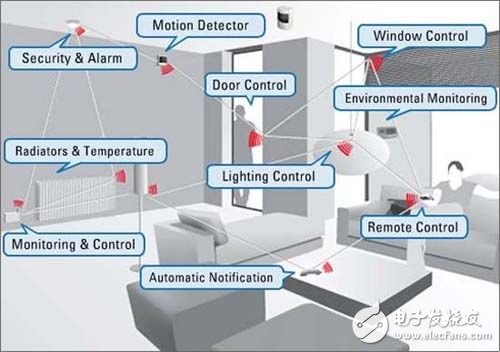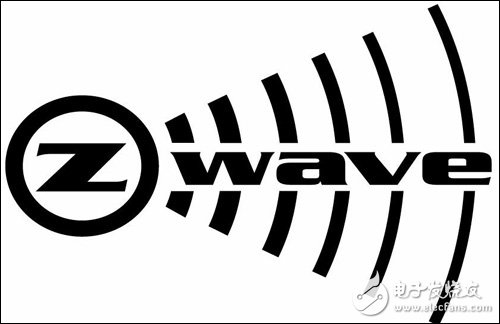The concept of intelligent home appeared as early as a decade ago. In 1998, Bill Gates built an intelligent mansion for himself. The early smart homes were wired, which to a large extent limited their own development: first, the wiring problem, the need to open the wall, so that most of the renovated houses are reluctant to join in; secondly, the line cloth Well buried in the wall, maintenance and maintenance is very inconvenient, once there is a problem, it means to open the wall again; in the end, it is costly, so that the early smart home is only suitable for high-end people, not civilian consumer goods. The wireless solution brings the dawn of home automation, cutting off these cumbersome lines and eliminating a lot of trouble. For the moment, wireless smart homes are mainly divided into Bluetooth, Wi-Fi, Zwave and ZigBee according to the technology used. Wireless technology enables people to remotely control the home. WiFi, Zigbee, Zwave and Bluetooth comparison analysis WiFi technology The smart home products based on WiFi technology are the most common, and the advantages are that the transmission rate is fast, the product cost is low, and the life is also the most popular. For the user, the smart home combination based on WiFi is the most trouble-free, and the purchase device can be directly networked. Everything has two sides. Although WiFi is fast and widely popular, it also has its own technical disadvantages: its biggest problem is security is very low, wireless stability is weak; power consumption is also one of its weaknesses, which will lead to its Limited application in the home field, such as smart door locks, infrared forwarding controllers, various sensors, etc. are not suitable for use; in addition, the networking capacity of WiFi is relatively low, the current actual size of WiFi networks generally does not exceed 16 devices In the actual home environment, only the number of switches, lighting, and home appliances has far exceeded 16. It is obvious that the development space has been limited. Compared with the popular WiFi technology, the ZigBee technology mentioned below has a relatively high threshold for R&D and application. It is not something that anyone can control, such as Schneider, Siemens, Sony, General Electric, Panasonic, etc. The top 500 companies have joined the ZigBee camp, and domestic companies such as Huawei and IOT are also in the ZigBee camp. Zigbee technology First of all, the security of ZigBee technology is very high, and there has not been a cracking precedent in the world. Its security stems from its systematic design: AES encryption (advanced encryption system), which is 12 times more rigorous than bank card encryption technology. Secondly, Zigbee adopts honeycomb structure networking, each device can pass multiple directions. Communication with the gateway, the network stability is high; in addition, its network capacity theoretical node is 65,300, enough to meet the needs of home network coverage, even smart communities, intelligent buildings, etc. can still fully cover; Finally, Zigbee has the ability of two-way communication, not only Can send commands to the device, and the device will feedback back the execution status, which is very important for the terminal experience, especially the security equipment. If you click to close the door, but don't know if the door is really locked, it will bring In addition, Zigbee uses a very low power design, can be fully battery powered, in theory, a battery can be used for more than 10 years, energy saving and environmental protection. Zwave technology Zwave's data transmission rate is 9.6 kbps. The effective coverage of the signal is 30 meters indoors (more than 100 meters outdoors). It is suitable for narrow bandwidth applications and has certain security and stability. However, it is currently only used in home automation. The main disadvantages are three: First, there are fewer nodes, the theoretical value is 256, and the actual value may be only about 150. It is the upper limit of the number of devices that can be accommodated. In fact, many manufacturers can accommodate 20 or 30 devices. The second is a tree-like networking structure. Once the upper end of the branch is broken, all devices at the lower end will not be able to communicate with the gateway. Third, there is no encryption method, which is poor in security and vulnerable to attack. (The frequency band used by Zwave is non-civilian in China. Zwave smart home is not common in China, and more is still used abroad.) Bluetooth technology Everyone knows about Bluetooth technology, I am afraid it belongs to the Bluetooth function on the mobile phone. Its power consumption and cost are between WiFi and Zigbee, but the transmission distance is the shortest. It belongs to a point-to-point, short-distance communication method. Because it is transmitted between mobile devices or short distances, Bluetooth products will provide some comparisons. Personalized experiences, such as Bluetooth headsets, Bluetooth speakers, smart scales, etc., are not suitable for building a large home network due to their short transmission distance. Summary of intelligent lighting technology data - use your design wisdom to light the intelligent lighting
15A 125V GFCI Receptacle with LED light indicator does not protect against circuit overload, short circuits, or shocks. For example, you can still be shocked if you touch bare wires while standing on a non-coducting surface such as a wood floor.
Automatic fault alarm, if GFCI malfunction, the LED will flash, the power will be cut off.
GFCI WR Receptacle,GFCI 20A WR Outlet UL 2015,GFCI 20A WR Outlet Self Testing,GFI WR 15A Self Testing Hoojet Electric Appliance Co.,Ltd , https://www.hoojetgfci.com


